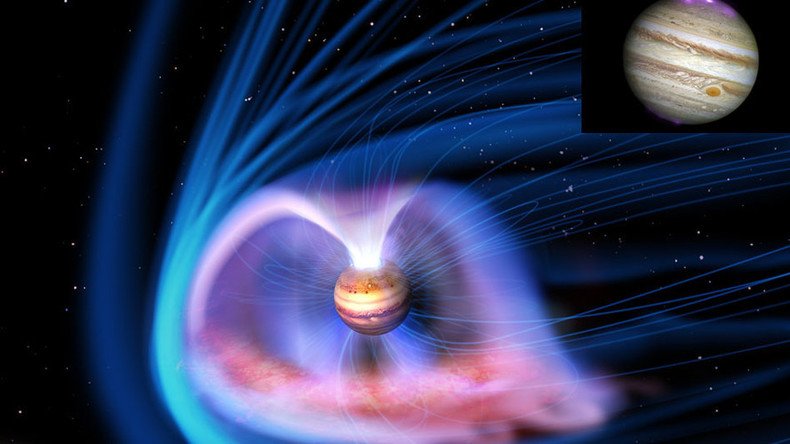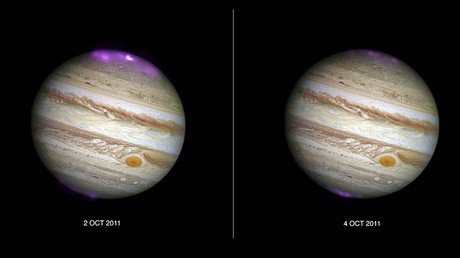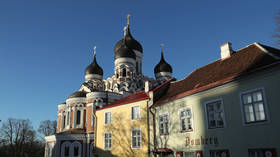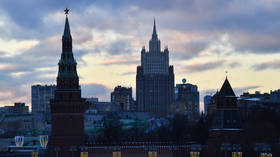Spectacular image shows Jupiter’s magnificent auroras (PICTURE)

A dazzling image has been released showing off Jupiter’s impressive magnetosphere and auroras in all their cosmic glory.
Similar to Earth, Jupiter’s magnetic field compresses when hit by a blast of charged particles emitted from the sun.
The compression pushes the charged particles towards Jupiter's poles and down into the atmosphere, generating an astonishing aurora light over the giant planet.
READ MORE: Scientists warn devastating solar storms could disable communications, electronics
X-Ray shows Jupiter's aurora polaris. Way more energetic than ours and bigger than Earth itself! C:NASA/ESA pic.twitter.com/twwpkP2SGo
— AstroCamp (@AstroCamp) April 7, 2016
The aurora light is created by the recombination of electrons with atmospheric ions after previously being knocked away from atmospheric gases.
Jupiter boasts some of the most powerful auroras in the solar system - hundreds of times more powerful and brighter than Earth’s in the all-spectrum range.
READ MORE: Jupiter dazzles with ‘Northern Lights’ after solar storms (PICTURES)
The illustration by Japan’s Aerospace Exploration Agency was released by NASA last month, after the US space agency captured an incredibly detailed image of Jupiter via the Chandra X-ray observatory.
Researchers monitored the impact of giant solar storms on Jupiter’s aurora by examining X-rays emitted over two 11-hour observations, and found that these collisions result in Jupiter's Northern Lights.














